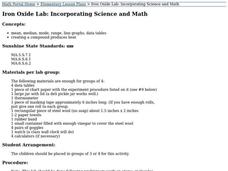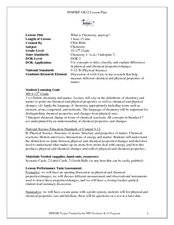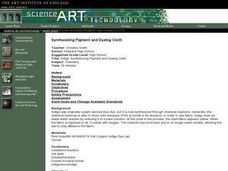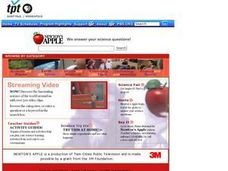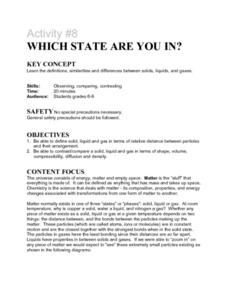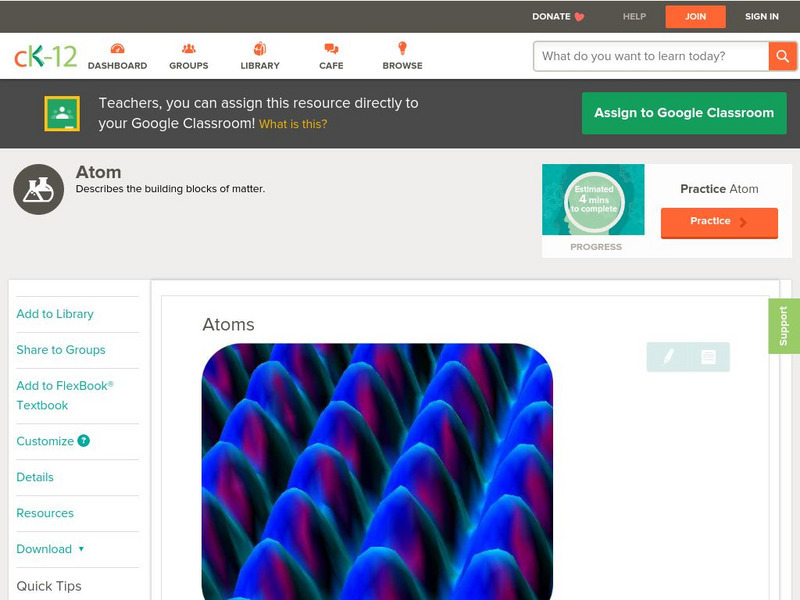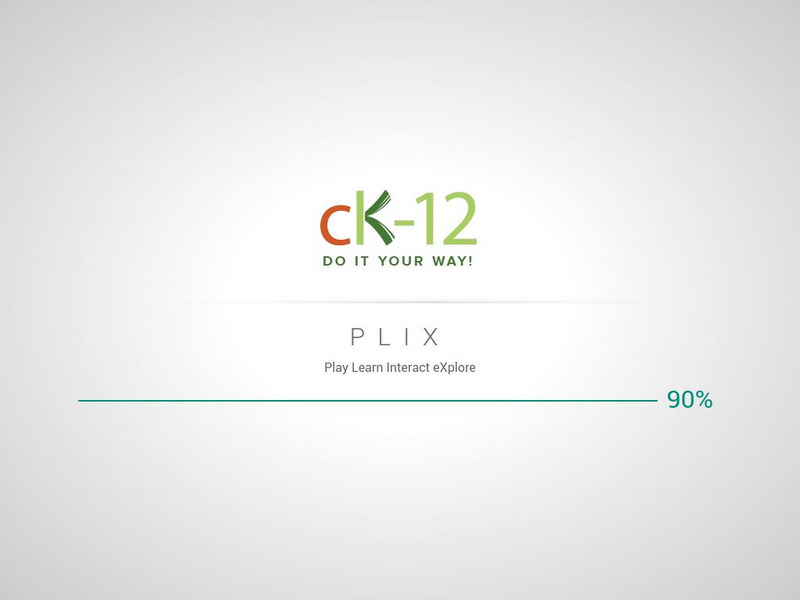Curated OER
Gravity - The Glue of the Universe
Students explore physics by conducting a class experiment. In this gravitational force lesson, students define several scientific terms associated with force. Students utilize a styrofoam cup and marbles to simulate a satellite crashing...
Curated OER
Iron Oxide Lab: Incorporating Math and Science
Students conduct an experiment in small groups, draw conclusions about the amount heat of a compound achieves and practice their data analysis skills.
Curated OER
Let the Sunshine in
Students collect and analyze data to study wavelengths of visible light. They cover Styrofoam cups with three different colors of sun filtering products and shine a lamp directly on the cups. They determine the most effective filtering...
Curated OER
Water Ph
Eighth graders study the concepts of acids, bases, salts and neutralization. They discuss steam adoption program, acid rain and other ecological implications. They use indicators to obtain pH values of household chemicals and to...
Curated OER
Hybridization
In this chemical compounds worksheet, students draw the Lewis structure and "cloud" structures for given compounds. Then students match the Lewis structure with the correct cloud diagrams. This worksheet has 2 problems to solve.
Curated OER
Reading Labels For Fat Types
Students analyze a variety of cooking oils to determine the amount and types of fats included in each.
Curated OER
Drops on a Penny
Eighth graders experiment to determine the number of drops of water a heads up penny hold. They create a stem and leaf graph of the class results and use the data for further experimentation on a tails up penny.
Curated OER
Science Quiz-General Knowledge
For this science quiz worksheet, students complete a set of 20 true or false questions covering a variety of general science topics. An answer key is included.
Curated OER
Bouncing Balls
Students create a polymer to demonstrate its properties and develop an awareness of the wide variety of uses for polymers.
Curated OER
What Is Chemistry, Anyway?
Students differentiate physical and chemical change. For this chemistry lesson, students list examples of those changes. They apply what they learned in a Jeopardy style team game.
Curated OER
The Genetic Basis of Neurological Disorders
Young scholars describe some aspects of known genetic defects on the human neurological condition. They participate in a variety of exercises including drawings, games, and analogies.
Curated OER
Synthesizing Pigment and Dyeing Cloth
Students create a synthetic dye and oxidize the dye and record the effects.
Curated OER
Aurora Borealis
Students discuss what causes the northern lights and the folklore attached to them. They discuss magnetic fields, and use various common materials to discover if ions conduct electricity.
Curated OER
Extraction of DNA from White Onion
Students conduct lab test with minced onion to determine where chromosonal DNA is located within the cell, and whether or not it can be extracted.
Curated OER
Activity #8 Which State Are You In?
Middle schoolers define, give similarites and differences between solids, liquids, and gases. They compare and contrast a solid, liquid and gas in terms of shape, volume, compressibility, diffusion and density. Pupils classigy common...
Curated OER
Planet Structure & Interior
Students compare Jupiter and Earth. In this Earth and space studies lesson, students compare the composition of Earth and Jupiter and analyze how the composition affects the rate at which the planets spin.
Concord Consortium
Concord Consortium: Science of Atoms and Molecules: Nucleic Acids and Proteins
Through this activity, students work with macromolecules, proteins and nucleic acids. The focus is on the atomic structure of proteins, how linear polymers are made, and the surface charges of the resulting polymers. . Multiple-choice...
CK-12 Foundation
Ck 12: Plix: Build Some Helium: Atoms to Molecules
[Free Registration/Login Required] Build your own helium atom and make sure it has the correct number of protons, electrons, and neutrons on this site. Site also includes a small quiz on the topic.
Concord Consortium
Concord Consortium: Stem Resources: Spectroscopy
Web-based activity walks learners through the use of spectroscopy in determining the identity of atoms and molecules by defining the excited state of atoms, the frequencies of emitted photons, and atoms' ability to absorb them....
CK-12 Foundation
Ck 12: Physical Science: Atoms
[Free Registration/Login may be required to access all resource tools.] Atoms and how they are related to elements, and the particles that make up atoms.
Concord Consortium
Concord Consortium: What Makes Water Special?
Activity 4 investigates How does electron distribution impact our observations? Students have described how properties of molecules change depending on what atoms make up the molecule. In this activity students will use those ideas to...
CK-12 Foundation
Ck 12: Plix: Aspartame Molecule: Peptides
[Free Registration/Login Required] Given prior knowledge of bonding and the molecular make up of aspartame, examine the model and determine which color represents which atom. Drag the labels at the bottom to the appropriate colored atom...
Libre Text
Libre Texts: Chemistry: Structure of Organic Molecules
Here you will learn how to understand, write, draw, and talk-the-talk of organic molecules. Why were different drawing techniques developed? Organic molecules can get complicated and large. It is a tedious to have to constantly draw out...
Utah State Office of Education
Utah Science: Matter
Discover atoms and molecules which make up matter, motion of atoms and how to measure the mass, volume and density of matter.



